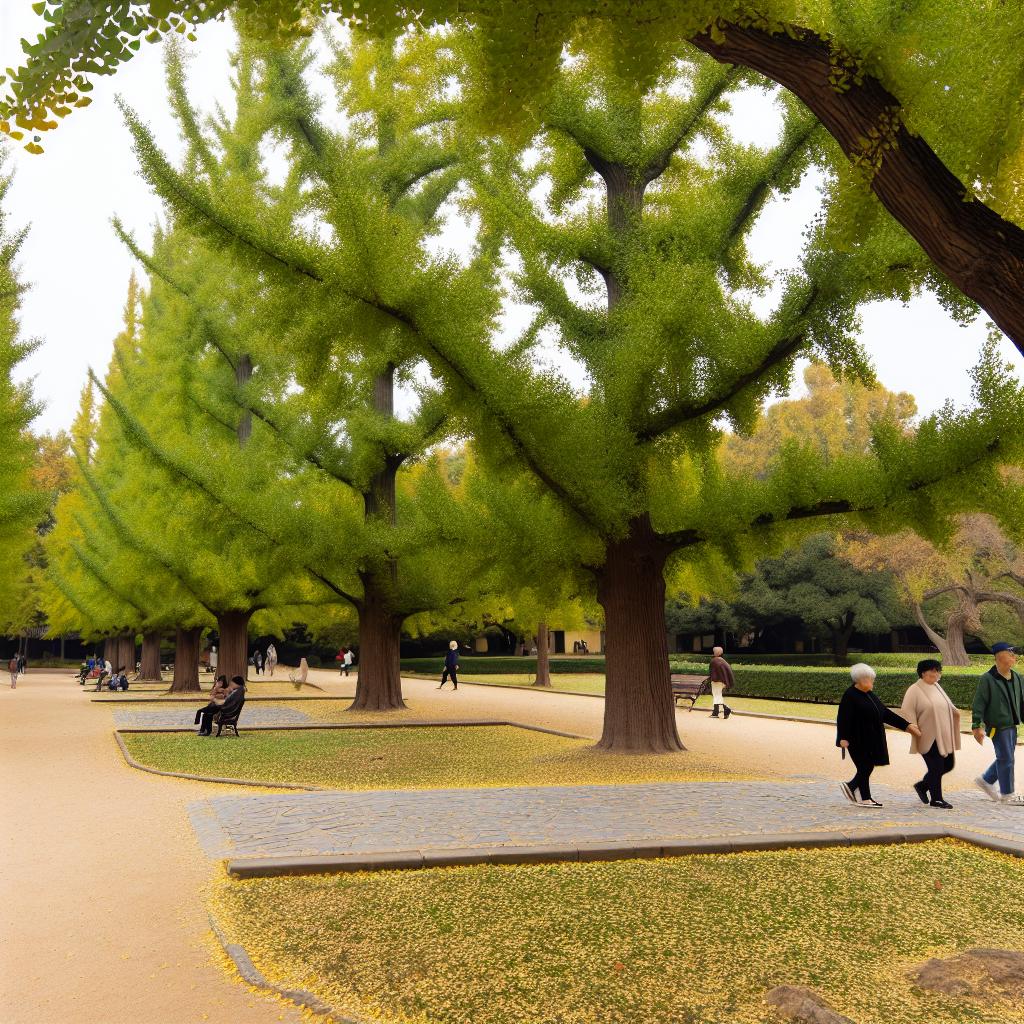Introduction to Ginkgo Biloba in Landscaping
Ginkgo biloba, widely referred to as the maidenhair tree, holds a prestigious place as one of the most ancient tree species existing today. This venerable lineage, combined with its unique aesthetic features, positions it as a coveted choice in landscaping. In this comprehensive exploration, we will discuss the myriad applications of Ginkgo biloba trees within the context of landscaping, emphasizing their benefits in terms of beauty, resilience, and ecological impact.
Unique Characteristics of Ginkgo Biloba
The distinctive attributes of Ginkgo biloba define its value in landscaping. Known for its fan-shaped leaves, which transition to a brilliant yellow during the autumn months, the tree offers an unparalleled seasonal visual spectacle. This transformative process contributes significantly to the tree’s decorative value. With the potential to mature to heights reaching 80 feet, Ginkgo biloba serves multiple functions in a landscape, acting as a shade tree and as a distinct decorative element. Furthermore, the tree is highly resilient, boasting remarkable resistance to common urban threats such as pests and pollution. This durability makes it a suitable candidate for landscaping projects in densely populated and industrial areas.
Choosing the Right Location
The successful cultivation of Ginkgo biloba in any landscape setting demands careful consideration of location. These trees thrive in well-drained soils and generally prefer full sunlight. However, their capacity to withstand partial shade adds to their versatility. Ginkgo biloba is frequently incorporated into a variety of environments such as city parks, street alignments, and commercial landscapes. Their hardy nature and minimal maintenance requirements are significant factors contributing to their popularity in urban planning and development.
Designing with Ginkgo Biloba
Integrating Ginkgo biloba into landscape design can enhance the aesthetic appeal of any green space. There are numerous creative possibilities when using these trees in landscape architecture. Planting them as standalone specimens can create commanding visual focal points. Alternatively, when planted in rows, they can form natural barriers or create elegant avenues. The unique shape of their leaves and their vibrant autumnal color contribute to a design’s textural contrast, ensuring that a space remains visually engaging throughout the year. For designers seeking to add a year-round interest to their projects, Ginkgo biloba is an exemplary choice.
Environmental and Health Benefits
Beyond their aesthetic contributions, Ginkgo biloba trees play a significant role in enhancing urban environments ecologically. One notable benefit is their effectiveness in absorbing pollutants, which leads to improved air quality. This quality is especially beneficial in cities where air pollution is a concern. Additionally, Ginkgo biloba trees provide habitats for local wildlife, fostering biodiversity within urban areas. Although Ginkgo biloba is also celebrated for its historical association with medicinal properties, such uses are secondary to their primary role in aesthetic landscaping.
For those seeking to delve deeper into the integration of Ginkgo biloba into landscaping projects, there are valuable resources available. Consulting with horticultural experts or visiting garden centers can provide practical insights into tree care and placement strategies. Furthermore, organizations like Extension services specialize in tree care and urban forestry, offering crucial guidance to enhance both the beauty and resilience of a landscape.
The Place of Ginkgo Biloba in Urban Planning
The enduring presence of Ginkgo biloba trees in urban settings is a testament to their adaptability and longevity. City planners often utilize these trees to address specific challenges, such as limited green space and climate concerns, due to their robust nature. Their longevity means that, once established, Ginkgo biloba trees require relatively low maintenance, reducing long-term care costs—a valuable feature for municipalities managing large urban areas.
Historical Significance and Global Cultivation
Ginkgo trees are not only valued for their durability in landscaping but also cherished for their historical significance. Native to China, Ginkgo biloba has been cultivated for centuries, with records of plantings dating back thousands of years. This historical context adds an element of legacy and elegance to modern landscapes. Today, these trees are cultivated across the globe and are particularly valued in urban environments for their rich history and unmatched resilience.
Implementing Ginkgo Biloba in Modern Landscape Projects
In contemporary landscape projects, implementing Ginkgo biloba involves strategic planning to maximize the tree’s natural attributes. Urban designers often consider the tree’s mature size, ensuring enough space is allocated for fully developed trees. This foresight is critical in preventing overcrowding and maintaining the tree’s health. Moreover, designers consider the tree’s growth rate and timing of leaf color change to synchronize with seasonal design themes.
Challenges and Considerations
While Ginkgo biloba is celebrated for its benefits, certain considerations must be accounted for. One of the most notable challenges is the tree’s fruit, produced by female specimens, which emit a strong odor when decaying. As a result, many landscaping projects preferentially use male cultivars to circumvent this issue. Additionally, space allocation is paramount, as the tree’s expansive canopy can overshadow smaller plants if not carefully planned.
Future Directions in Landscaping with Ginkgo Biloba
The future of landscaping with Ginkgo biloba is promising, given the increasing importance of sustainability in design. As environmental concerns gain prominence, Ginkgo biloba’s ability to improve air quality and provide a habitat for urban wildlife aligns well with contemporary ecological and aesthetic objectives. As a result, landscape architects are likely to continue exploring innovative applications of these ancient trees in both public and private projects. The combination of beauty, historical significance, and environmental benefits ensures that Ginkgo biloba will remain a staple in landscape architecture for years to come.
In conclusion, Ginkgo biloba is not just an ornamental tree but a vital element of contemporary landscaping, offering aesthetic beauty, environmental sustainability, and historical depth. For those involved in landscape design, incorporating Ginkgo biloba thoughtfully can enhance the aesthetic value and ecological wellness of any project.

